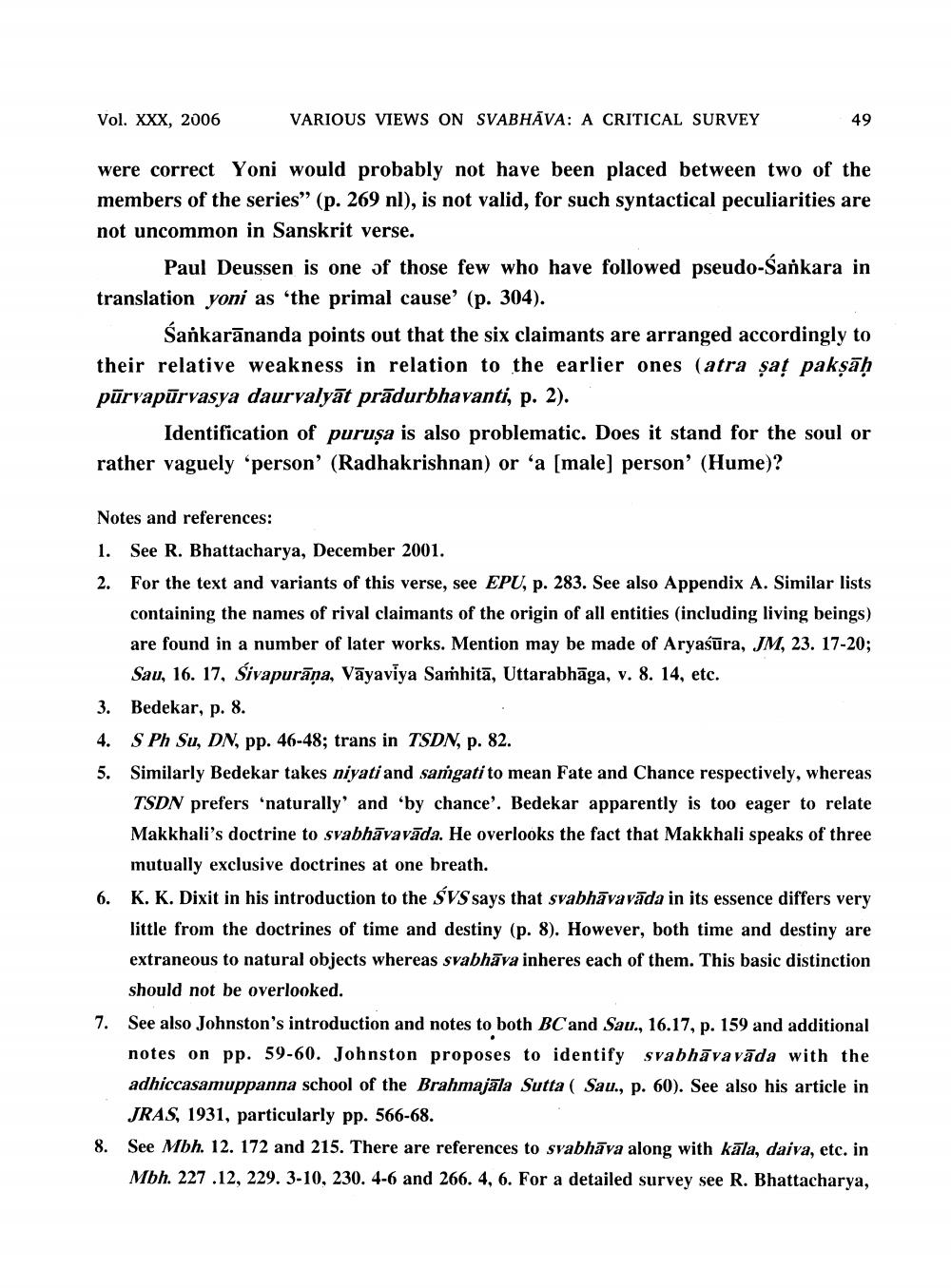________________
Vol. XXX, 2006
VARIOUS VIEWS ON SVABHĀVA: A CRITICAL SURVEY
49
were correct Yoni would probably not have been placed between two of the members of the series" (p. 269 nl), is not valid, for such syntactical peculiarities are not uncommon in Sanskrit verse.
Paul Deussen is one of those few who have followed pseudo-Sankara in translation yoni as 'the primal cause' (p. 304).
Sankarānanda points out that the six claimants are arranged accordingly to their relative weakness in relation to the earlier ones (atra șat pakṣāḥ pūrvapūrvasya daurvalyāt prādurbhavanti, p. 2).
Identification of puruşa is also problematic. Does it stand for the soul or rather vaguely 'person' (Radhakrishnan) or 'a (male) person' (Hume)?
Notes and references: 1. See R. Bhattacharya, December 2001. 2. For the text and variants of this verse, see EPU, p. 283. See also Appendix A. Similar lists
containing the names of rival claimants of the origin of all entities (including living beings) are found in a number of later works. Mention may be made of Aryaśūra, JM, 23. 17-20;
Sau, 16. 17, Sivapurāna, Vāyaviya Samhitā, Uttarabhāga, v. 8. 14, etc. 3. Bedekar, p. 8. 4. S Ph Su, DN, pp. 46-48; trans in TSDN, p. 82. 5. Similarly Bedekar takes niyati and sangati to mean Fate and Chance respectively, whereas
TSDN prefers 'naturally' and 'by chance'. Bedekar apparently is too eager to relate Makkhali's doctrine to svabhāvavāda. He overlooks the fact that Makkhali speaks of three
mutually exclusive doctrines at one breath. 6. K. K. Dixit in his introduction to the SVS says that svabhāvavāda in its essence differs very
little from the doctrines of time and destiny (p. 8). However, both time and destiny are extraneous to natural objects whereas svabhāva inheres each of them. This basic distinction
should not be overlooked. 7. See also Johnston's introduction and notes to both BC and Sau., 16.17, p. 159 and additional
notes on pp. 59-60. Johnston proposes to identify svabhāvavāda with the adhiccasamuppanna school of the Brahmajāla Sutta ( Sau., p. 60). See also his article in
JRAS, 1931, particularly pp. 566-68. 8. See Mbh. 12. 172 and 215. There are references to svabhāva along with kāla, daiva, etc. in
Mbh. 227.12, 229. 3-10, 230. 4-6 and 266. 4, 6. For a detailed survey see R. Bhattacharya,




